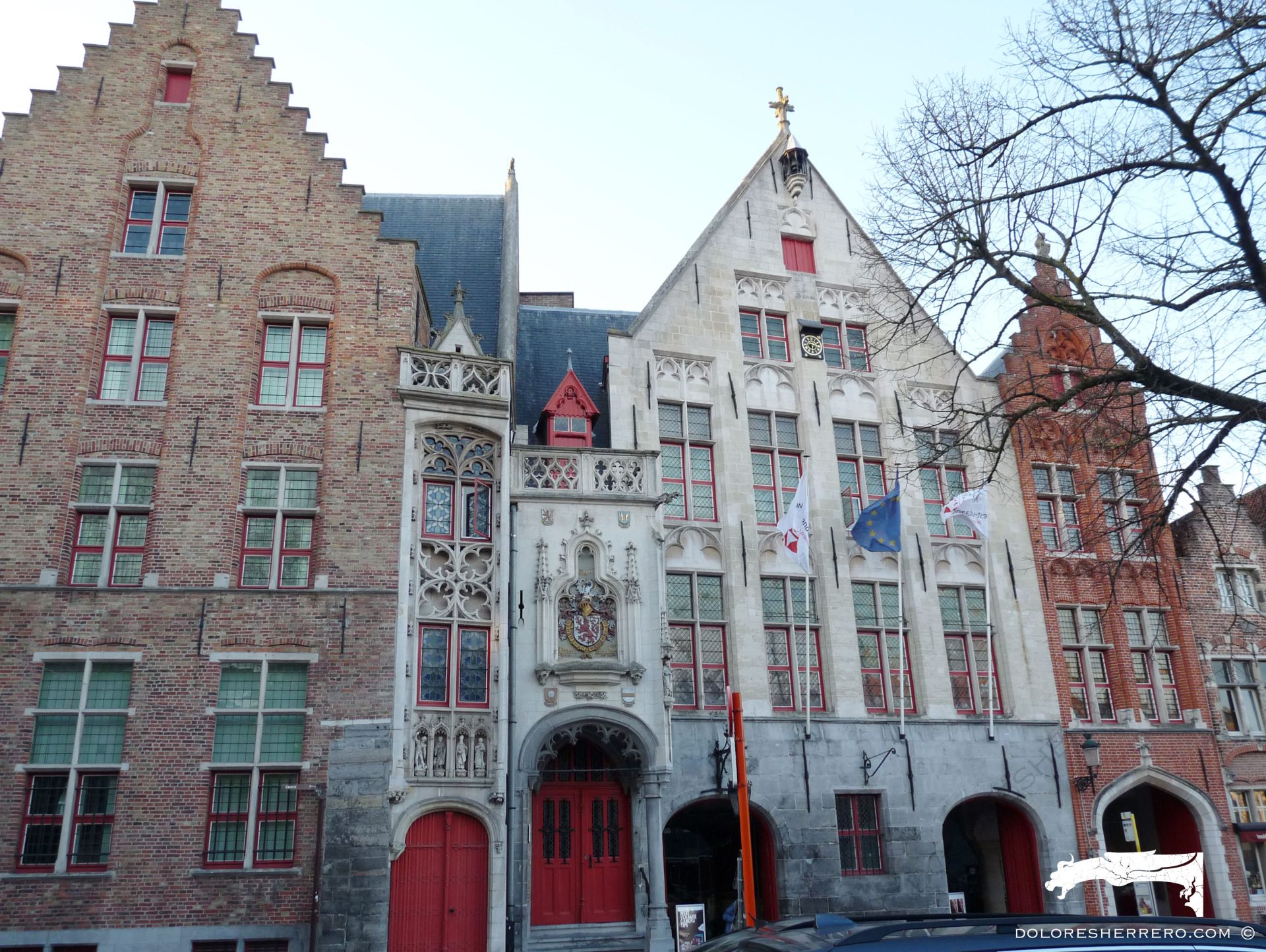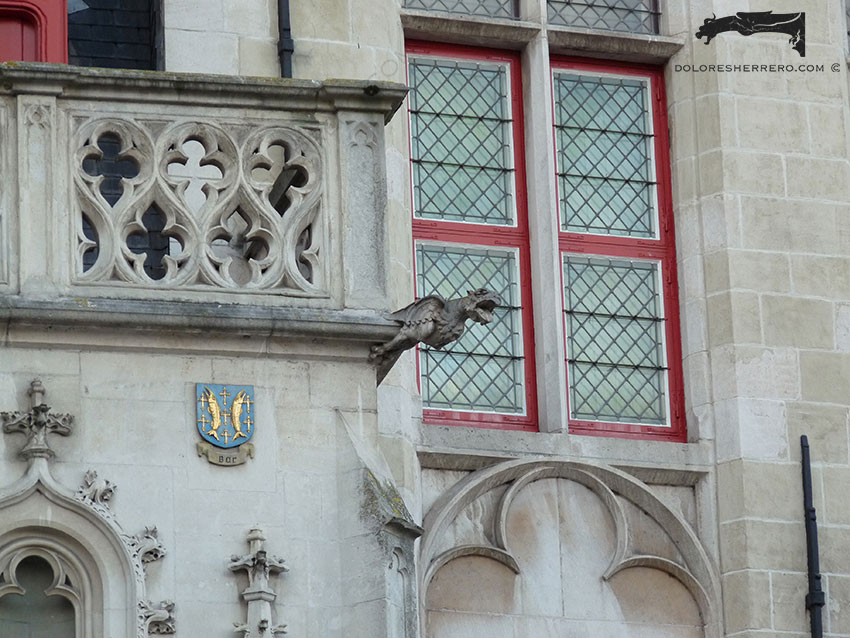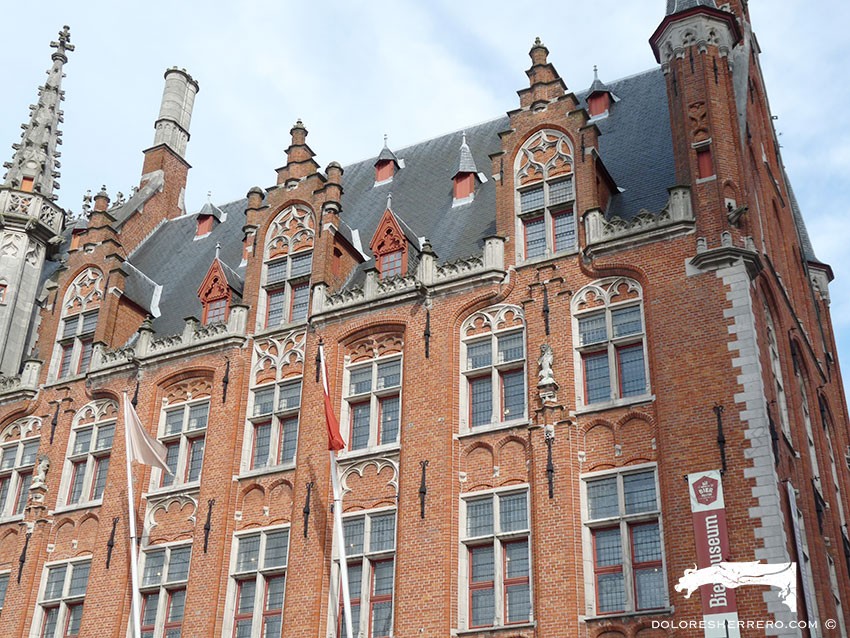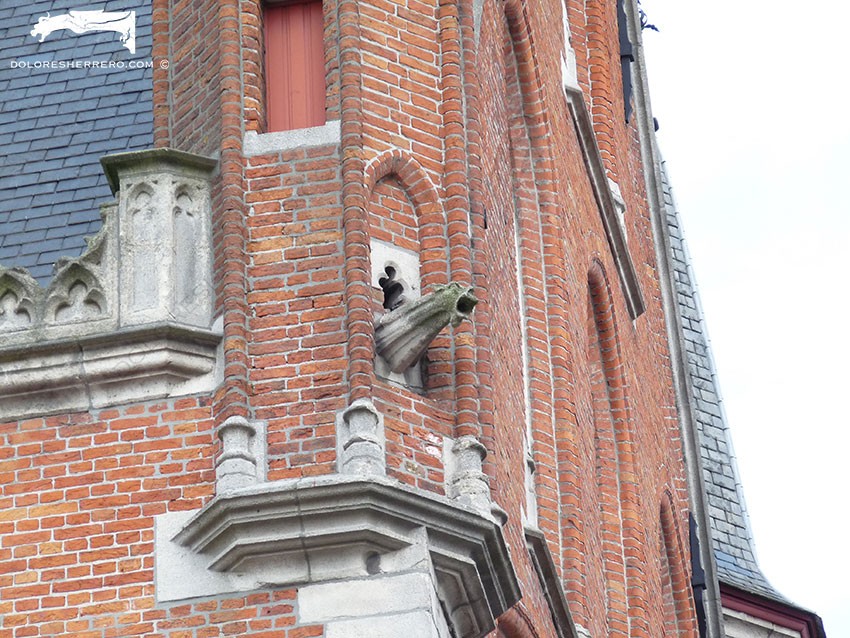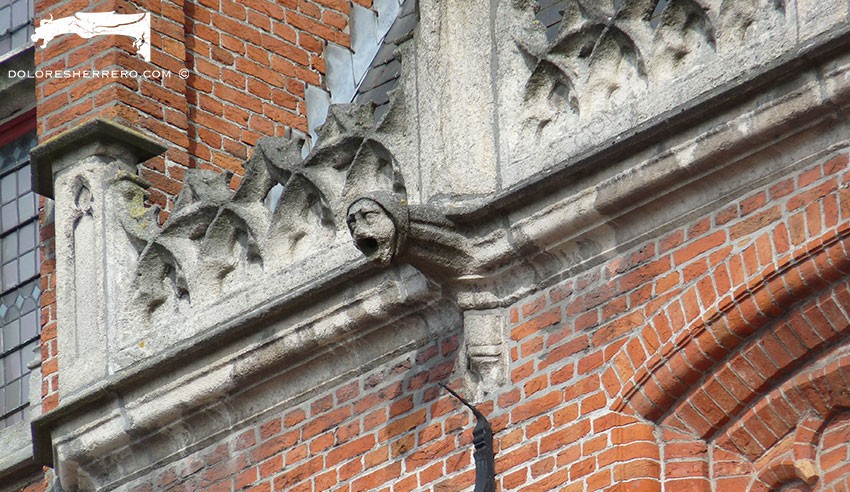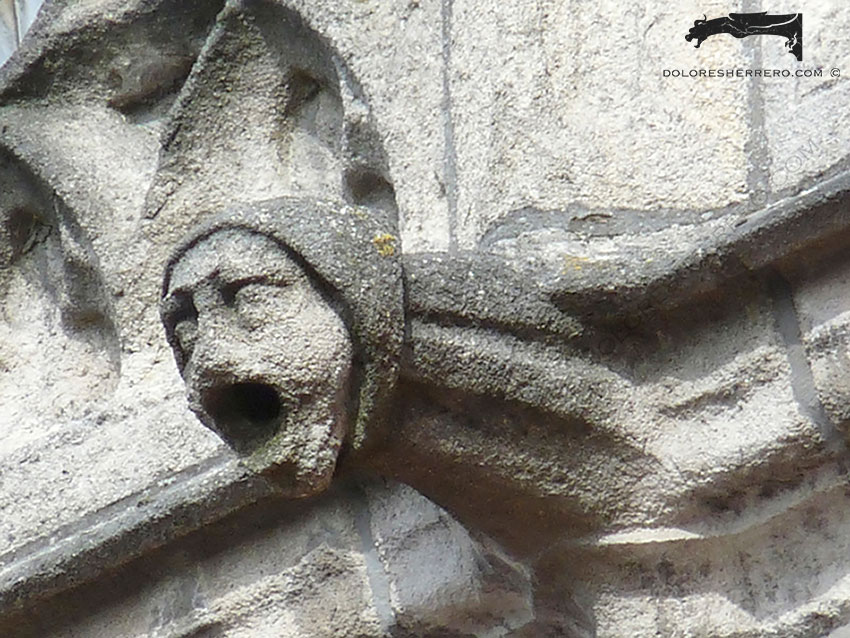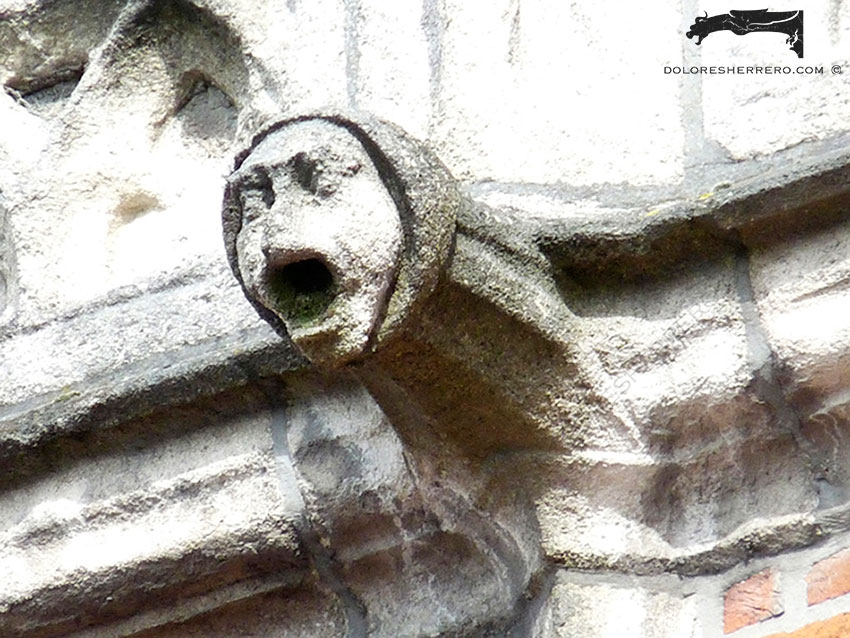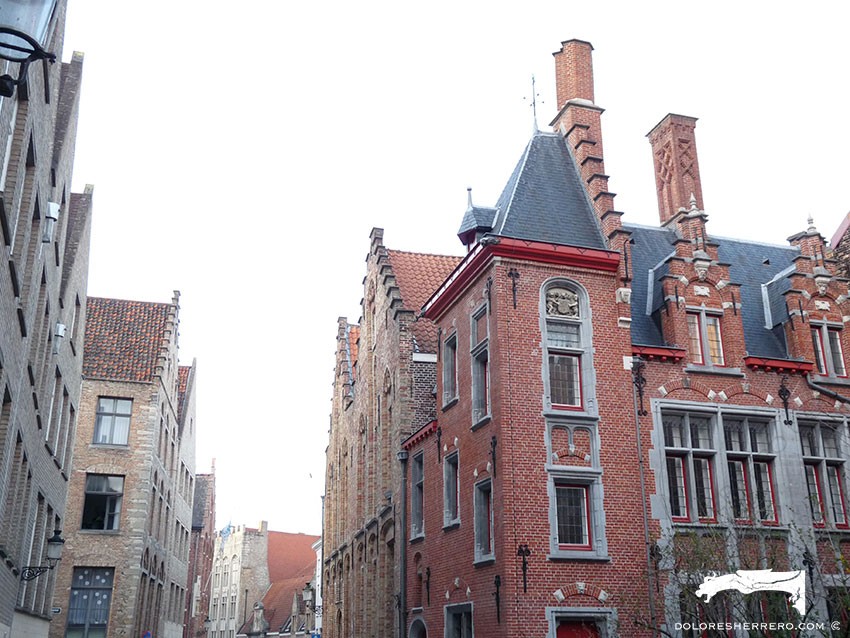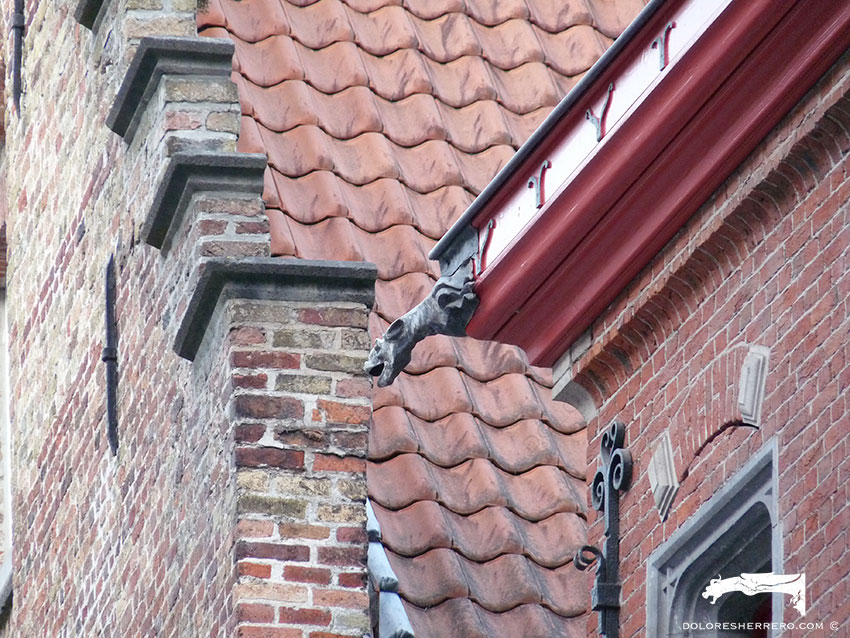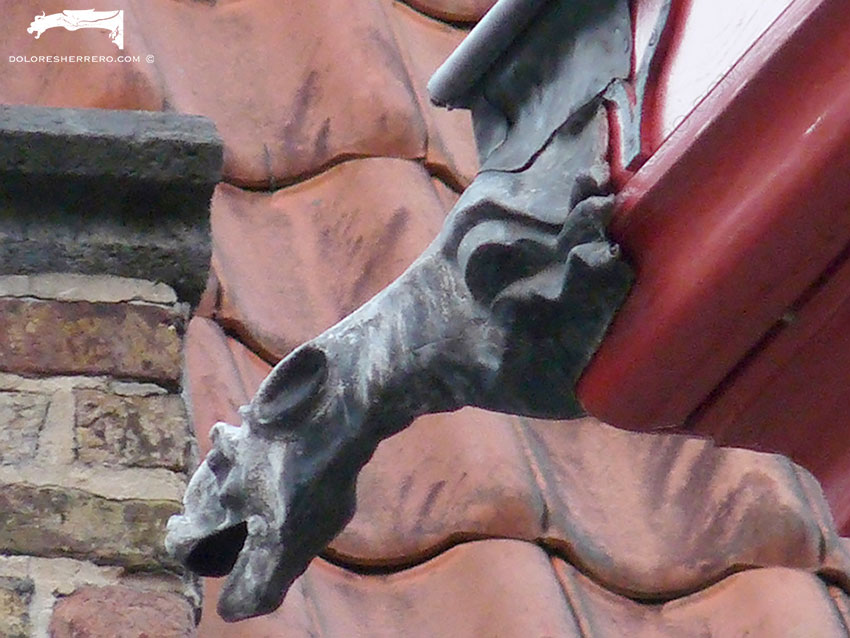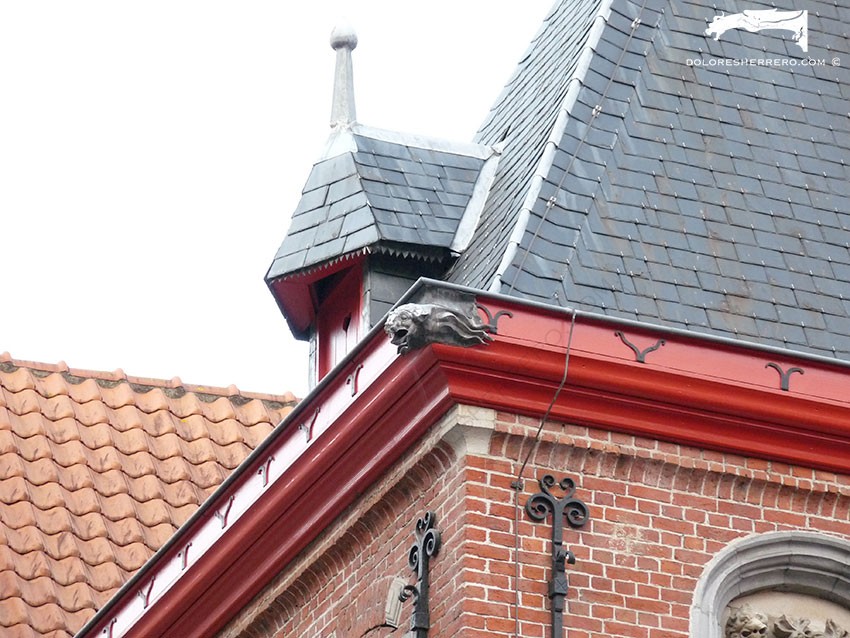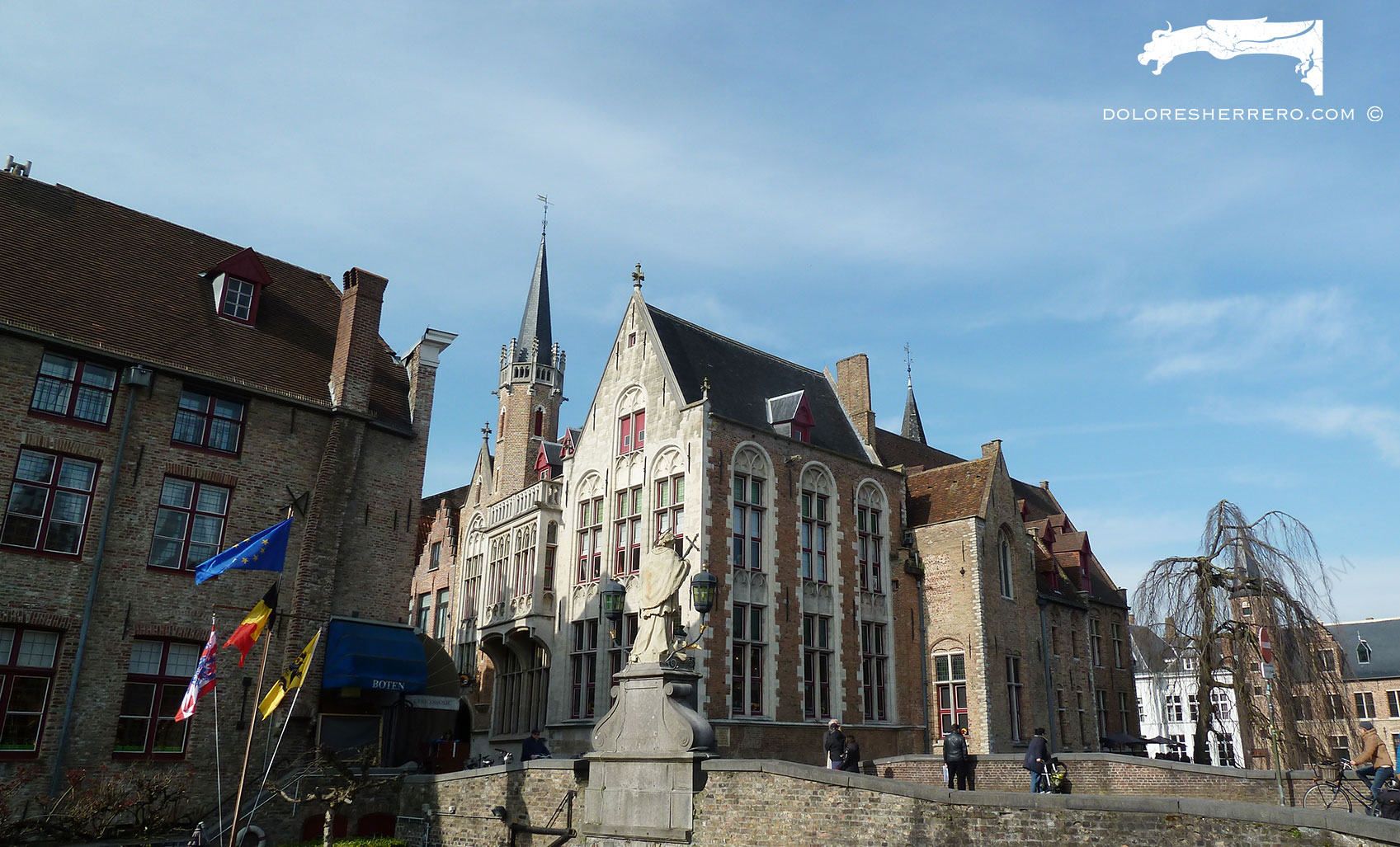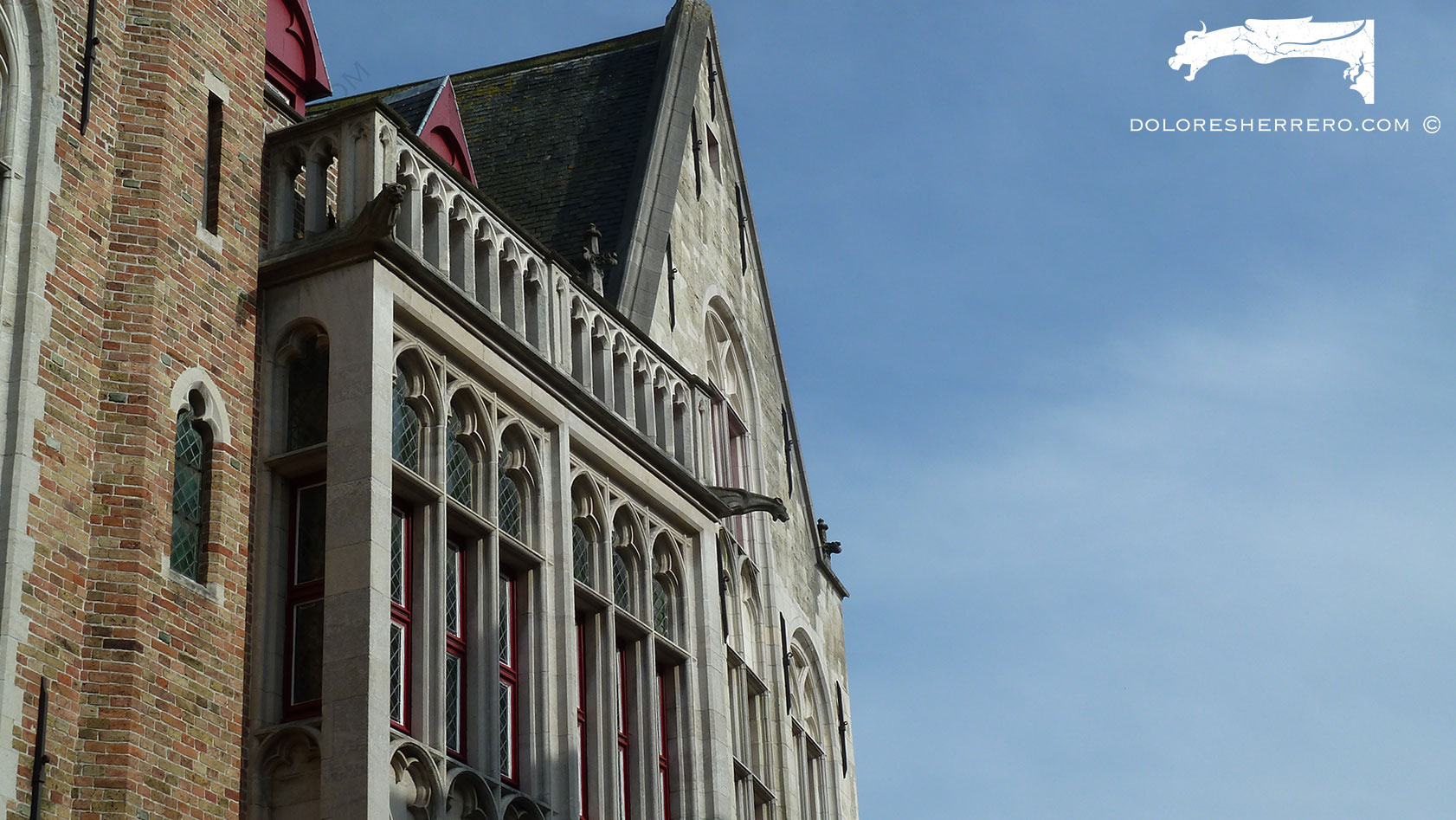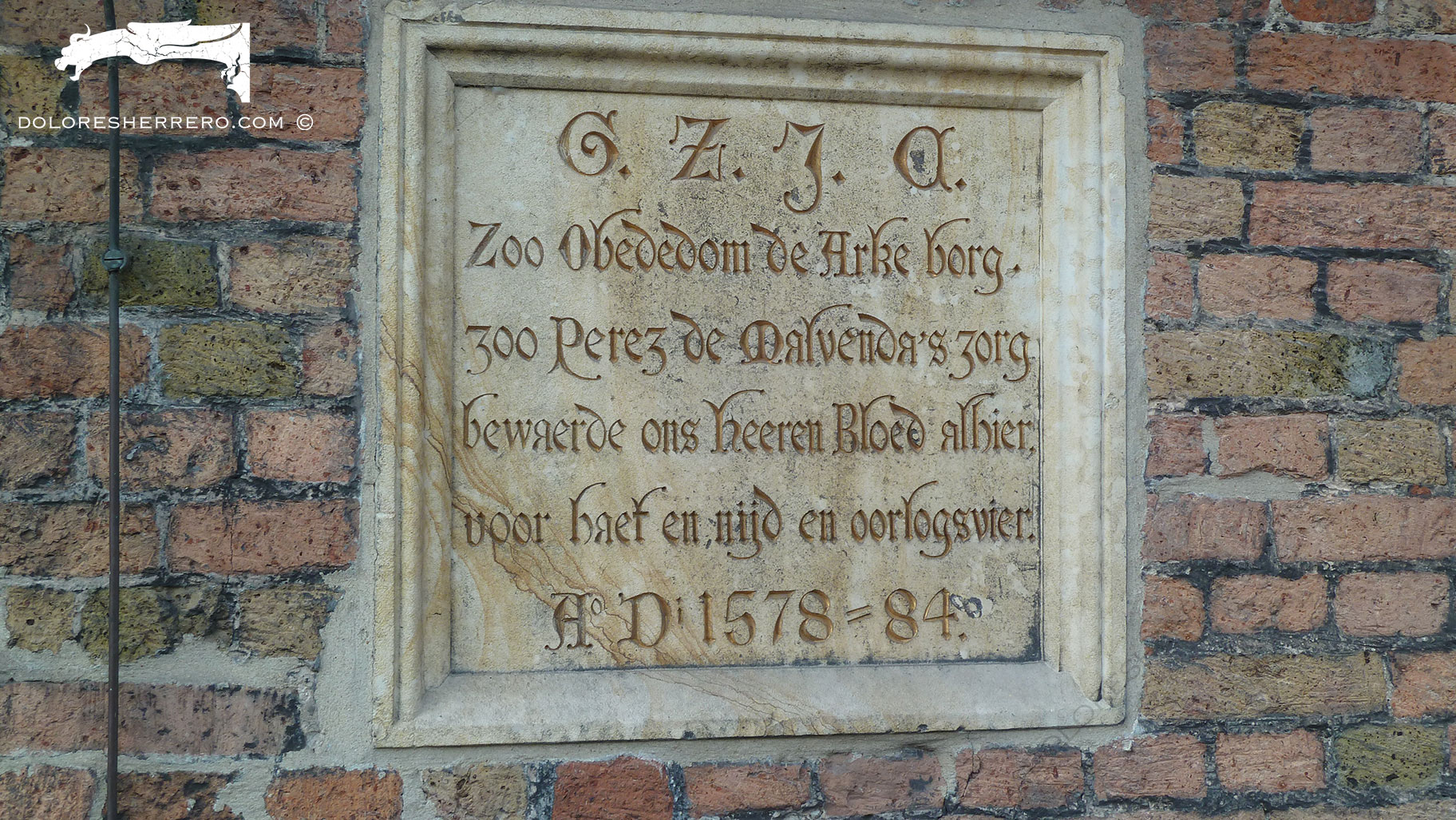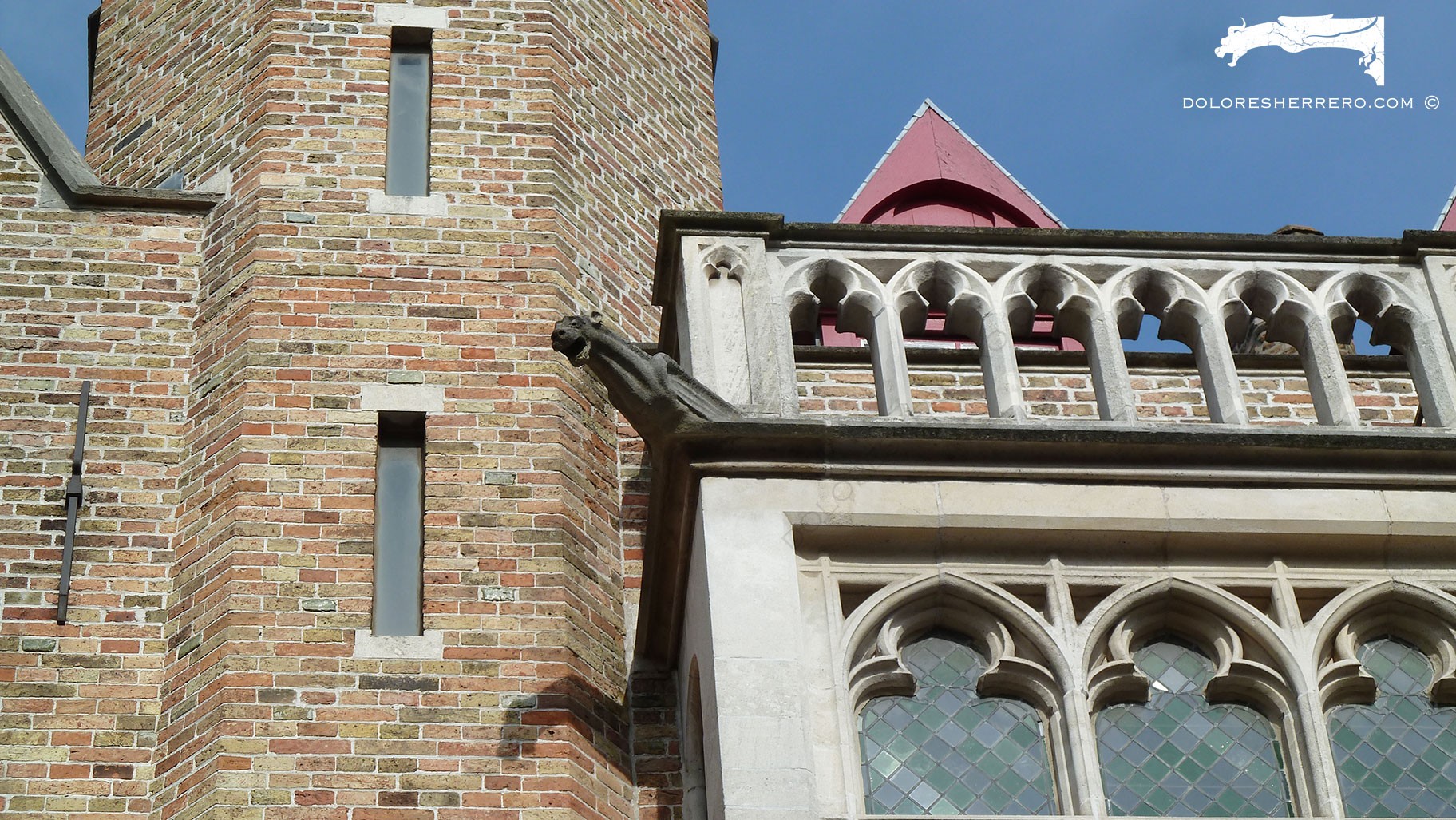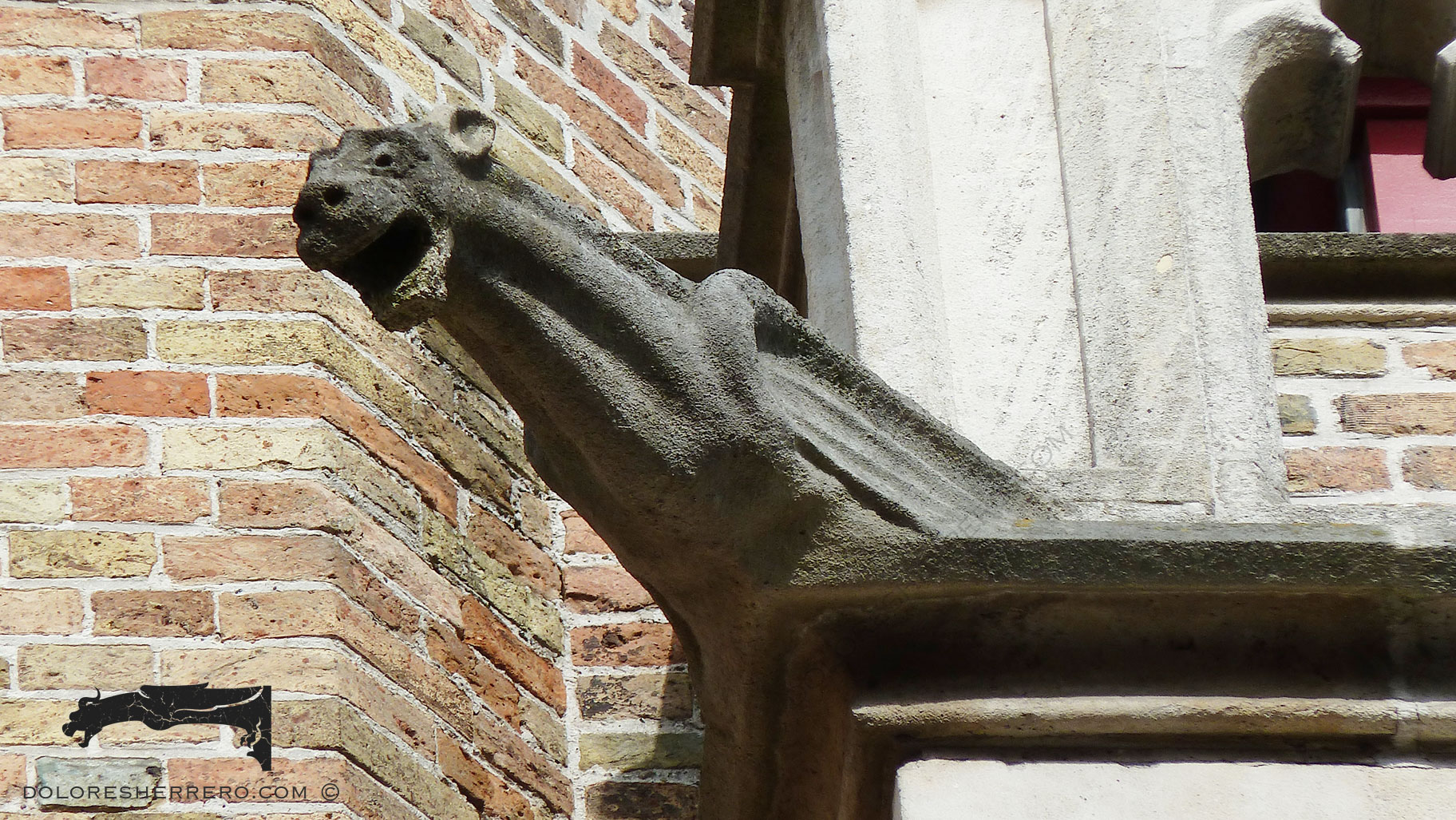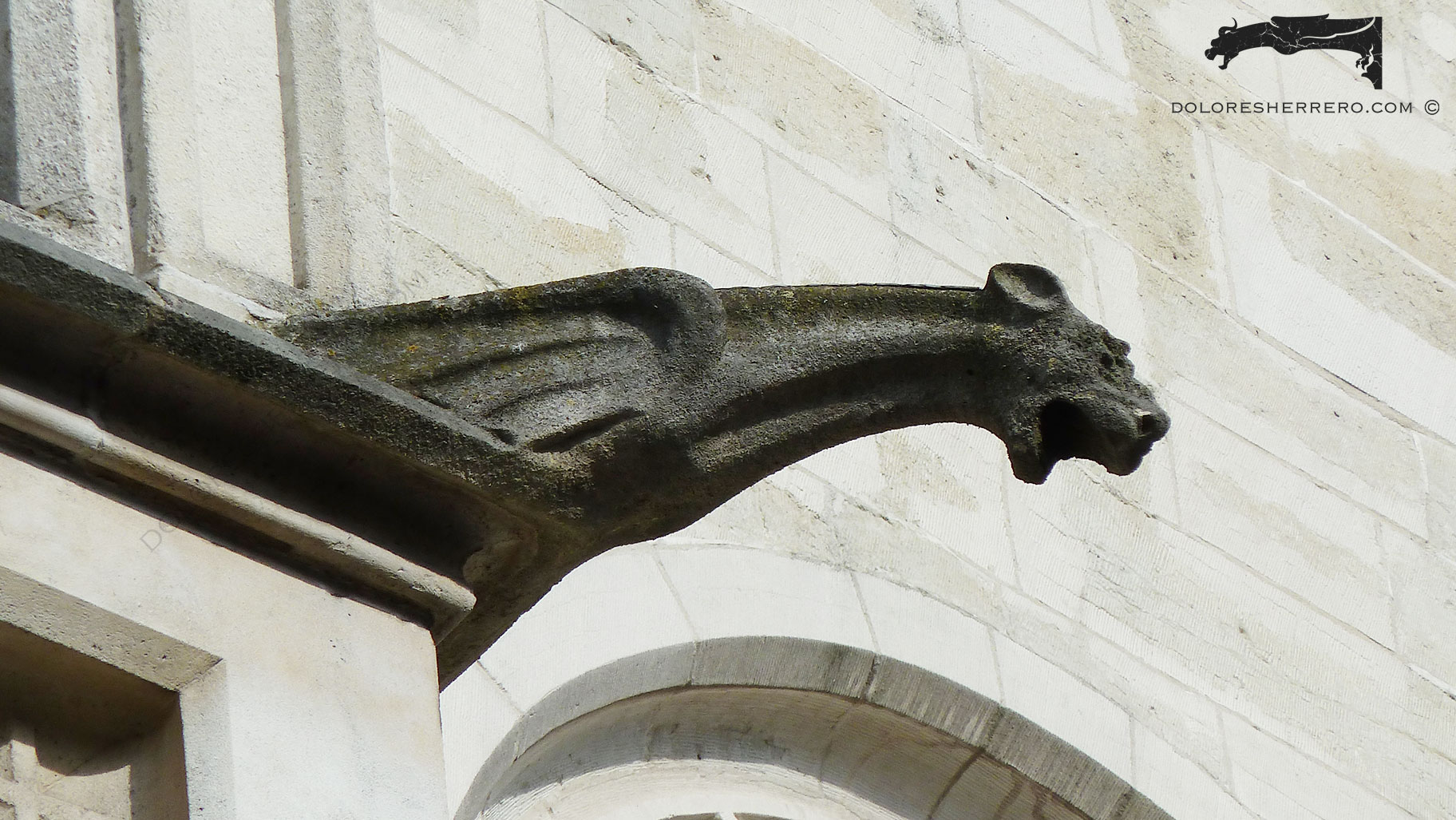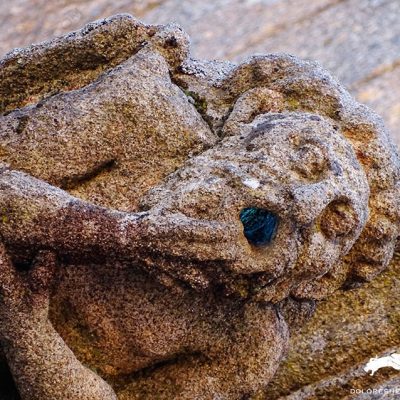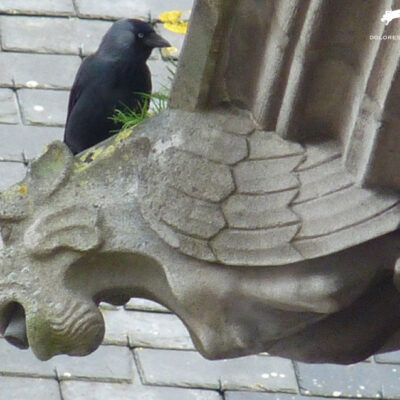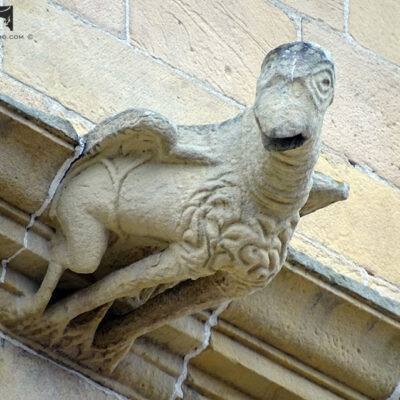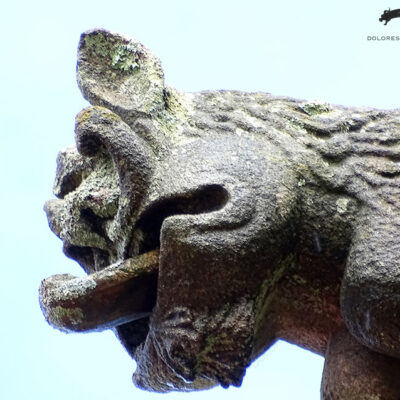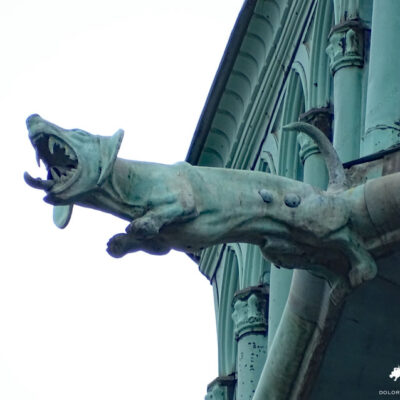In today’s post we’re off to Belgium to see some gargoyles in the beautiful city of Bruges.
Apart from the wonderful gargoyles on major buildings such as the City Hall, the Burghers’ Lodge (Poortersloge) and the Provincial Palace (Provinciaal Hof), which we’ll see in future posts, you can also find some distinctive gargoyles on the Old Customs House and the Post Office building.
The Old Customs House in Bruges
What is now Jan van Eyck Square (Jan van Eyckplein), with its statue of the Flemish painter erected in the 19th century, was originally the bourgeois and financial heart of Bruges and a Medieval centre for trade from 1200 onwards. The square is surrounded by magnificent buildings, some of which were restored in the 19th century. They include the Old Customs House (Het Tolhuis).
The Old Customs House (Het Tolhuis) dates back to 1477 and has undergone a series of rebuilding and restoration work. It was where taxes for imported goods were paid. It’s worth remembering that a major commercial port sprang up around the Bruges canals. In the 19th century, the Old Customs House went from fulfilling a commercial function to being a cultural centre, although the ground floor also housed a fire station up until the 1960s. Next door is the Porters’ Lodge (Pijndershuisje) which was where the dock workers gathered in the Middle Ages.
On the Old Customs House there is a superb gargoyle, a winged quadruped with bat’s wings and a goatee beard giving him a devilish appearance.

The Post Office Building in Bruges
In the main square, or Market Square (Grote Markt), is the Post Office building (Posterijen), one of the beautiful, fabulous buildings surrounding the square and built in the late 19th century.
Three gargoyles jut out from the Post Office building. They are heads with a long grooved neck, like the ones we saw at Cork Cathedral (Ireland). One of the heads is a monster with slightly pointed ears and a goatee beard. The other two are human heads with a hood or cap.
Gargoyles in the Streets of Bruges
When you walk around Bruges, you occasionally come across houses with gargoyles jutting out from their façades.
Spanjaardstraat
Strolling along Spanjaardstraat, we found a house with two very distinctive gargoyles. They’re heads of small monsters with a prominent nose and a body in the form of flames.
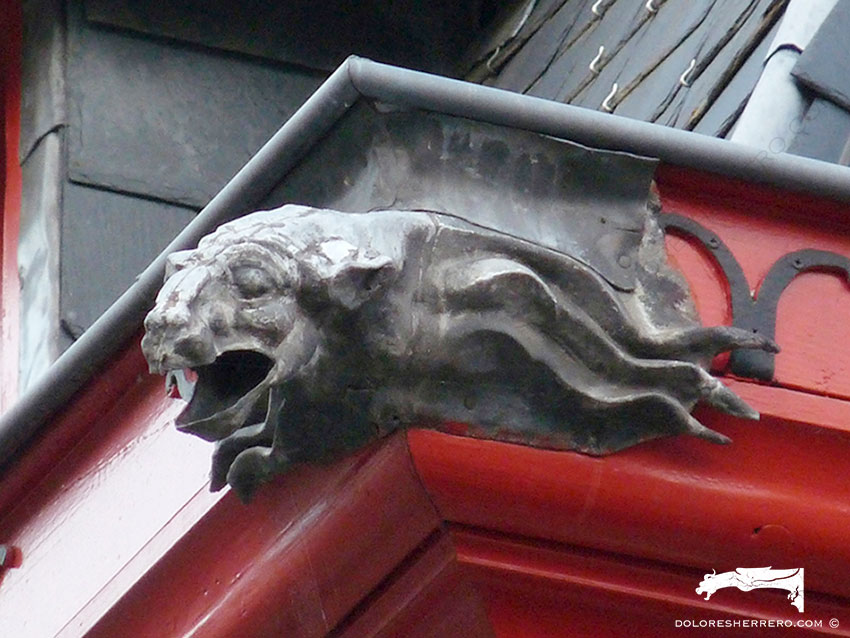
Wollestraat
On Wollestraat, two winged quadrupeds with dogs‘ heads and a magnificent ram gaze down at us from the top of one of its lovely buildings.
Fabulous gargoyles that add yet another layer to the fairy-tale atmosphere that characterizes this romantic city.
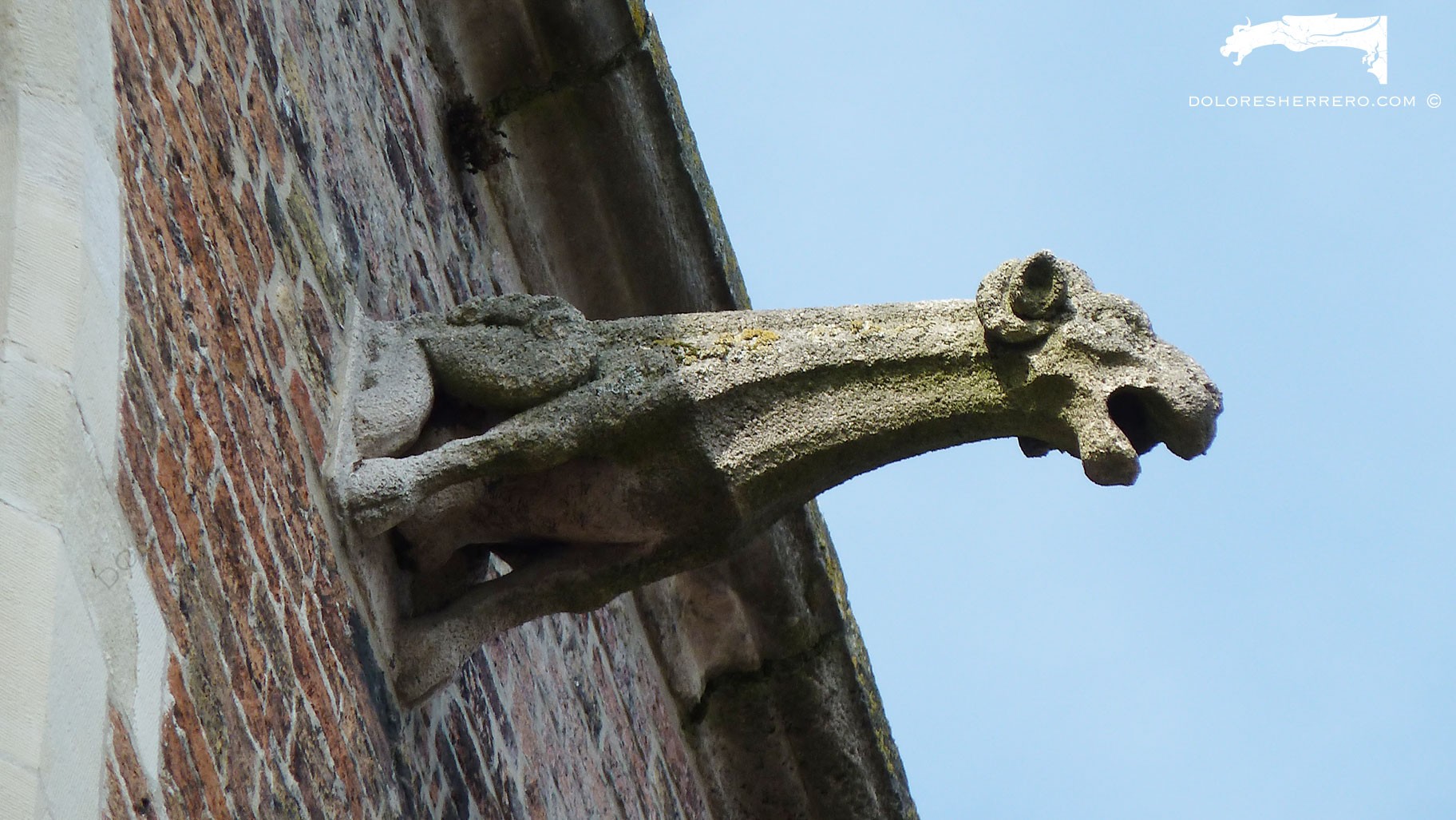

Doctor of Art History and researcher specializing in the study of gargoyles.
I am Dolores Herrero Ferrio, and my thesis, “An Approach to the Study of Gargoyles of Gothic Cathedrals in Castilla and León”, is dedicated to the study of these fascinating figures.
If you like gargoyles and art history, you will also enjoy my book, “The Gargoyle and Its Iconography,” a book I have written with great care for those interested in the world of gargoyles.
I have created my own Encyclopedia of Gargoyles, a Gargopedia to share with you, where you will discover all the secrets and wonders of these enigmatic sculptures.
I hope you enjoy this Gargopedia as much as I have enjoyed creating it, and remember that each gargoyle has a story to tell, and here you will discover them all.
